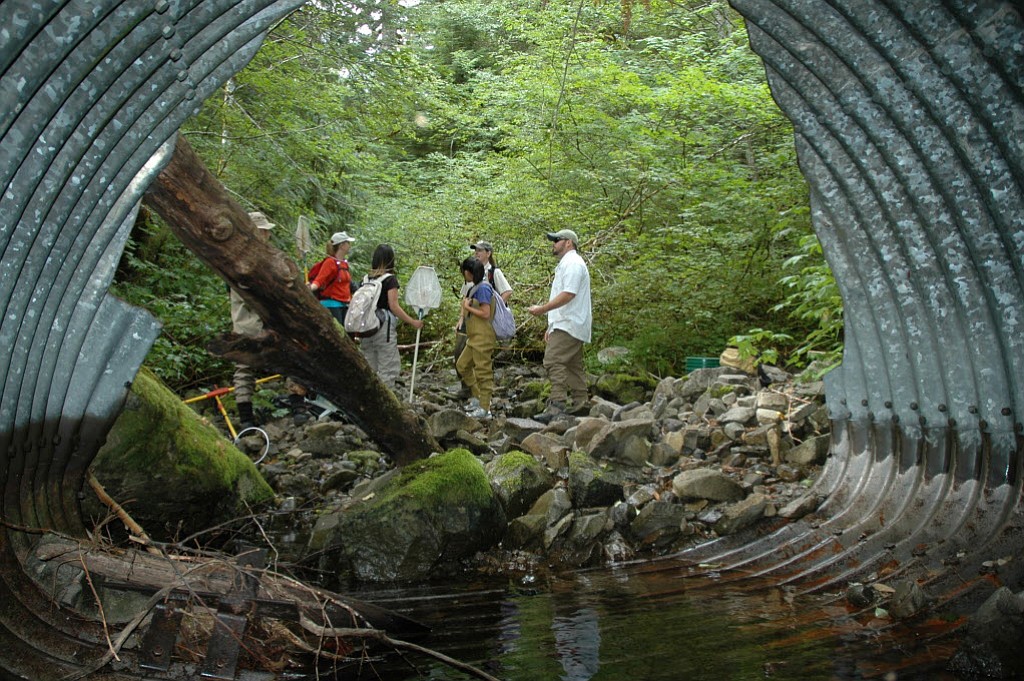A little-known state board has begun sizing up a daunting task: removing the many barriers that block fish across the state’s waterways.
That’s no small undertaking. The Fish Passage Barrier Removal Board cites about 14,000 such impediments in Washington alone. And that’s just the known barriers — the estimated total is closer to 35,000 or 40,000, according to officials involved in the effort. Many are culverts built decades ago.
It’s a job the board, now operating under the Washington Department of Fish and Wildlife, knows it won’t tackle all at once. That’s why the group is carefully planning its first steps, said Julie Henning, a Fish and Wildlife division manager who has helped lead the board.
“The problem statement is so huge … that’s millions and millions and millions of dollars,” Henning said. “We need to develop a strategic approach to fix the most important barriers that have the largest impact.”
The barrier removal board was created by the Washington Legislature last year. It came with no funding, so finding the resources to make a dent in the problem remains a question mark. But officials are working with local entities to identify priority areas, said David Price, a Fish and Wildlife restoration division manager also leading the barrier removal board.
In Clark County, high-priority watersheds include the North Fork and East Fork Lewis River, said Jeff Breckel, executive director of the Lower Columbia Fish Recovery Board. Both provide critical habitat for steelhead and other fish, he said. A map maintained by Fish and Wildlife shows a multitude of other total and partial blockades scattered across Clark County creeks and streams, with most concentrated in the western half of the county.
Removing barriers can open up crucial waters previously out of reach for salmon. But any project must be mindful of other barriers nearby, Breckel said. Overlooking one could render the effort futile, he said.
“We need to make sure if we take out a barrier, there isn’t one immediately downstream that would prevent fish from reaching the barrier that we just corrected,” Breckel said.
Culverts are among the most common types of fish barriers in Washington. But they’re not the only type. Undersized bridges can create problems by squeezing water too fast through the opening underneath. Dams are also a factor. Barriers are scattered across every type of jurisdiction, Breckel said, including public land, private land and forestland.
A variety of agencies and partners have for years helped remove fish barriers in Washington, Breckel said. But the problem has never been tackled at this level. Many people are unaware of the huge scale of the problem, he said.
“It’s a significant issue,” Breckel said. “It’s one of the highest priorities we have for salmon recovery.”
The biggest problem area is Puget Sound, which has a higher concentration of people, roads and waterways than any other part of the state, Price said. But Southwest Washington is a problem area in its own right, he said.
For now, the barrier removal board will continue developing its strategy for opening waterways in the most effective way possible, Price said. “Funding will certainly be a focus” of the group’s discussions in the coming months, he added.
When the time comes, removal projects may target entire waterways, rather than individual barriers here and there, Price said.
“We want to be able to fix whole stream reaches and whole watersheds so that you can actually see some of the salmon returning,” he said.
That means not spreading projects too thinly around the state, Price said.
“But we do want to spread the benefit around.”




